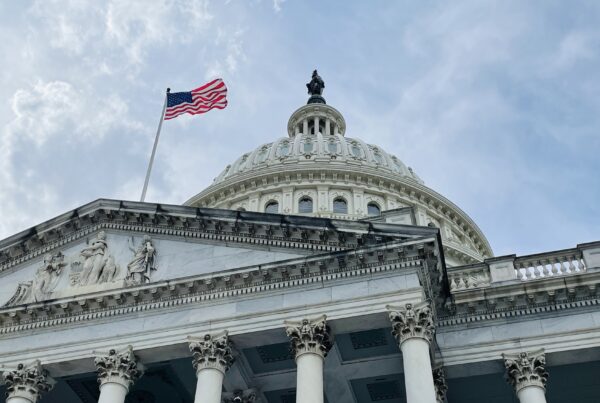With the issuance of Revenue Procedure 2019-38, the IRS has finalized the Section 199A deduction safe harbor test for rental real estate. To provide a little background information, the Tax Cuts and Jobs Act (TCJA), a new 20% tax deduction was created for the qualifying business income of partnerships, S corporations and sole proprietors. This is known as the Section 199A deduction. At the time of its passing, it was unclear when a rental real estate activity would rise to the level of a “trade or business” and qualify for this tax break. In January of 2019, the IRS issued Notice 2019-17 to provide proposed guidance for rental real estate owners seeking to benefit from the Section 199A deduction.
Much like the proposed guidance, the Revenue Procedure focuses on when a “rental real estate enterprise” (enterprise) will be considered as a “trade or business” under the safe harbor rules solely for purposes of the Section 199A deduction and not be challenged by the IRS. An enterprise is defined to be an interest in real property held for the production of rents owned by an individual or “relevant passthrough entity” (RPE) which may consist of an interest in multiple properties. An RPE is defined to be a partnership (other than a PTP) or an S corporation that is owned, directly or indirectly, by at least one individual, estate, or trust. The safe harbor test only applies to those interests held directly by the individual/RPE or through a disregarded entity. Taxpayers may treat each rental activity as a separate enterprise or may treat all similar properties as a single enterprise. Commercial and residential rental real estate cannot be part of the same rental real estate enterprise as they are deemed to be different categories of properties.
Here is a quick example to help to illustrate these enterprise rules. An individual taxpayer owns five rental properties directly and one through a partnership of which they own 75 percent. Three of the properties are residential, two are commercial and the one owned by the partnership is residential. This taxpayer has the option to treat each of the three residential properties as either a single enterprise or as three separate enterprises for purposes of the safe harbor test. The taxpayer does not have the option to include the partnership’s residential rental property as part of an enterprise since it is not owned directly by the taxpayer. Additionally, this taxpayer has the option to treat the two commercial rentals as either the same or separate enterprises. Once the taxpayer decides whether to treat their rental activities as a single or separate enterprise, they must continue to treat them in that manner going forward.
Under the safe harbor test an enterprise will be treated as a trade or business for Section 199A if it meets the following criteria while making certain modifications:
- Separate books and records are maintained for each enterprise;
- 250 hours of rental services are performed during the year with respect to the enterprise; and
- The taxpayer maintains records, including time reports and logs, to support the hours, dates, description and provider of the services performed. This portion of the test does not apply until 2020.
The final guidance provides that the separate books and records test will be met if separate income and expense statements are maintained for each property included in the enterprise and then consolidated. Additionally, the 250 hours test will be met for enterprises held for more than 4 years if the test is met in any 3 of the 5 consecutive years ending with the taxable year being filed. Enterprises held 4 years or less must continue to meet the 250 hours test for each tax year.
Qualifying rental services for the 250 hours criteria include advertising, negotiating and executing leases, information verifications, rent collections, daily operations, maintenance and repair of the property, management of the real estate, purchasing of materials, and supervision of employees and independent contractors. These rental services may be performed by owners or by employees, agents, and/or independent contractors of the owners of the enterprise. Excluded from rental services are financial or investment management activities including arranging financing, procuring property, or constructing long-term capital improvements, or hours spent traveling to and from the real estate.
The Revenue Procedure continues to exclude certain rental activities from utilizing the safe harbor test. Real estate used by the taxpayer as a residence for any part of the year such as a vacation home which is also rented when the owner isn’t using it does not qualify. Additionally, real estate rented under a triple net lease is not eligible to use the safe harbor. While the definition of a triple net lease for purposes of the Revenue Procedure was expected to be expanded upon from the proposed guidance, it remained unchanged. The Revenue Procedure defines a triple net lease to be a lease agreement that requires the tenant or lessee to pay taxes, fees and insurance, and to be responsible for the maintenance activities for a property in addition to rent and utilities.
Additionally, the Revenue Procedure excludes two additional types of arrangements from qualifying for the safe harbor. Properties rented to a trade or business conducted by the taxpayer or in an entity under common control are excluded. Additionally, if any property within an enterprise is considered a specified service trade or business for purposes of Section 199A, the entire enterprise would be excluded. Taxpayers will need to be cautious when selecting the properties to include in each enterprise to avoid this exclusion.
It’s also important to note that a taxpayer not qualifying for the safe harbor test may still be able to have their rental activities qualify as a trade or business for purposes of the Section 199A deduction. The trade or business determination will be made based on the individual facts and circumstances of a taxpayer’s rental activities. Unfortunately, taxpayers who will find the safe harbor test difficult to satisfy will not have a bright-line test to utilize as the facts and circumstances determination is subjective and could be challenged by the IRS upon examination.
Please contact Len Nitti, CPA, MST ([email protected]) or your WG advisor with any questions or to discuss your situation.





